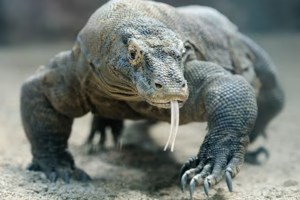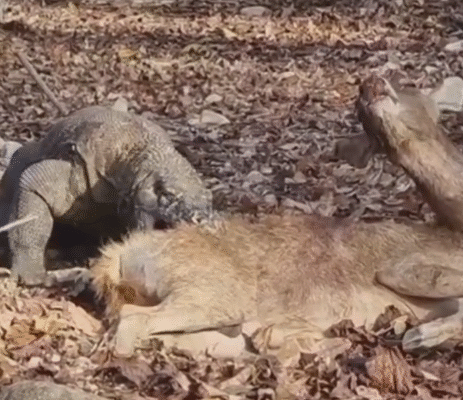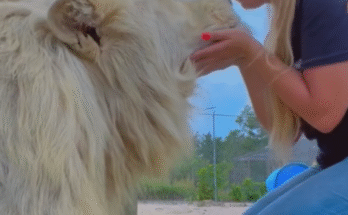 The Komodo dragon (Varanus komodoensis) is the largest living species of lizard in the world. Native to a few Indonesian islands including Komodo, Rinca, Flores, and Gili Motang, this fearsome reptile can grow up to 10 feet (3 meters) long and weigh over 150 pounds (70 kilograms). It belongs to the monitor lizard family and is known for its powerful build, sharp claws, and muscular tail. Watch video and read more👇
The Komodo dragon (Varanus komodoensis) is the largest living species of lizard in the world. Native to a few Indonesian islands including Komodo, Rinca, Flores, and Gili Motang, this fearsome reptile can grow up to 10 feet (3 meters) long and weigh over 150 pounds (70 kilograms). It belongs to the monitor lizard family and is known for its powerful build, sharp claws, and muscular tail. Watch video and read more👇
Komodo dragons are apex predators, meaning they sit at the top of the food chain. They feed on a variety of animals such as deer, wild boar, water buffalo, and even smaller Komodo dragons. They have strong jaws and sharp, serrated teeth. One of their most remarkable traits is their saliva, which contains toxic bacteria and venom that can cause shock and blood loss in prey. After biting an animal, they often follow it until it becomes weak and dies, then they consume it entirely — bones and all.
Komodo dragons are excellent hunters but also scavengers. They use their keen sense of smell, powered by their forked tongue and Jacobson’s organ, to locate carcasses from miles away. They are mostly solitary creatures and can be aggressive if threatened.
These dragons are capable of short bursts of speed, climbing trees when young, and swimming across short distances. Females lay around 20 eggs at a time, usually in burrows. The young dragons often live in trees to avoid being eaten by adults.
The Komodo dragon is considered a vulnerable species, facing threats from habitat loss, natural disasters, and human activities. Conservation efforts are ongoing, including protected reserves and national parks, to ensure this incredible ancient reptile survives for generations to come.
Thanks You!



